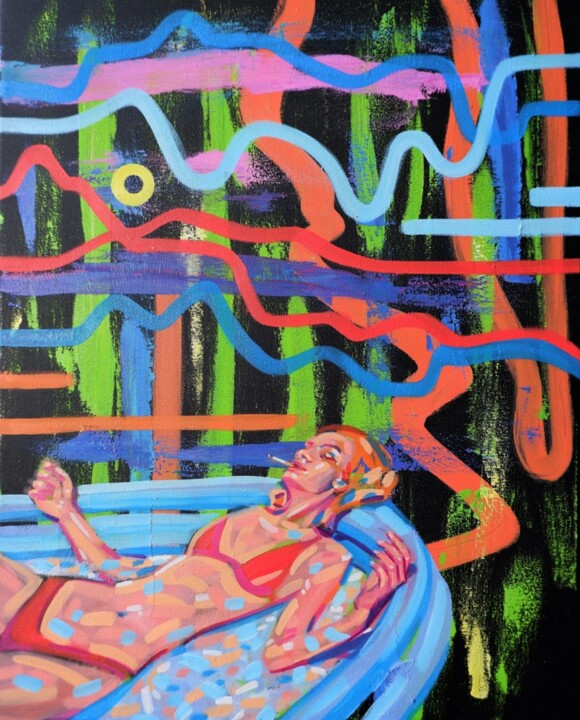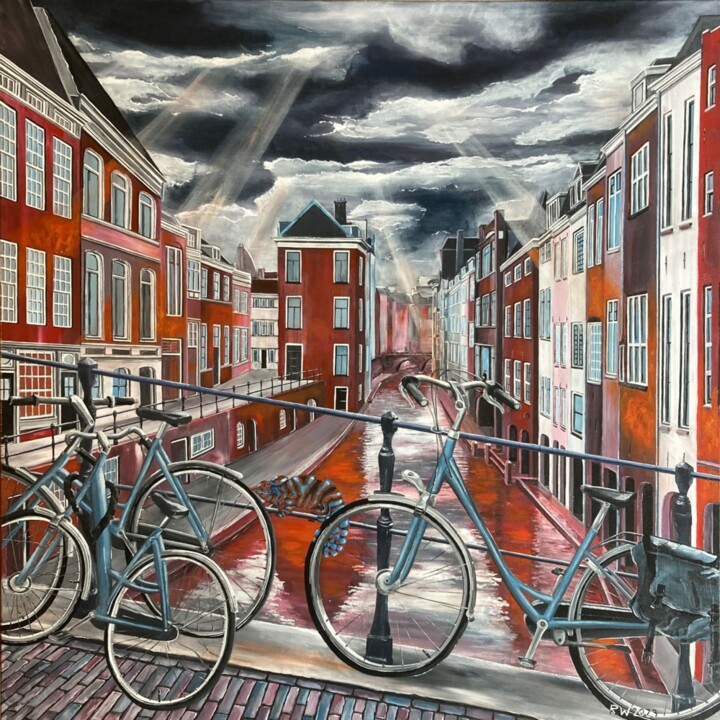Key Points
- Art + Activism = Artivism: A powerful fusion of creative expression and ecological advocacy, where art becomes a tool for awareness, action, and change.
- More Than Data, It's Emotion: Scientific reports inform, but art moves. Through visual language, artivism bridges the emotional gap between statistics and lived reality.
- From Protest to Poetry: Artivist works range from confrontational to symbolic — from Denes’s urban wheat field to Eliasson’s melting glaciers — all demanding a shift in perspective.
- Art as Witness and Warning: Artists like Daniel Beltrá document environmental destruction with haunting beauty, urging viewers to confront the cost of ecological collapse.
- A Call to Consciousness: Artivism doesn’t only raise awareness—it mobilizes. It invites viewers to feel, reflect, and act.
In a time marked by increasingly frequent and devastating ecological crises, a new language is emerging—one that unites aesthetics and activism: artivism, a fusion of “art” and “activism.” It’s not just about creating committed artworks, but about using creativity as a transformative force—a means to denounce, to propose solutions, and to mobilize collective consciousness. It is art that acts, that takes a stand, that steps—metaphorically and sometimes physically—into the public square to defend the Earth.
Climate change is no longer just a scientific or political issue: it has become a deeply cultural matter. Data can inform, but often fail to move. Art, with its emotional and universal language, has the power to create intimate and lasting connections. A photograph, a sculpture, or a performance can make us feel the crisis, touch it, internalize it—far beyond the cold numbers of a chart.
But how does this translate into practice? In what ways can art truly amplify efforts to combat climate change?
 Climate Change (2022) — Painting by Van Lanigh
Climate Change (2022) — Painting by Van Lanigh
Here are three examples of contemporary artists who, through very different approaches, have transformed their creative practice into a concrete commitment to the environment.
There is something hypnotic and unsettling in the aerial photography of Daniel Beltrá. His images, captured from a vantage point few can access, show us a wounded Earth: the ravaged rainforests of Indonesia, the black tides of the Gulf of Mexico, the melting Arctic ice. Abstract landscapes of disturbing beauty that, behind their colorful shades, conceal the traces of our responsibility. His famous series Spill, dedicated to the Deepwater Horizon oil spill, is both a visual denunciation and a poetic reflection. Beltrá does not shout; he compels us to look—and to ask: what are we truly losing?
From this aerial view, we move to the radical and symbolic gesture of Agnes Denes, a pioneer of ecological and conceptual art. In 1982, in the financial heart of New York, she cultivated a wheat field: Wheatfield – A Confrontation. Amid the skyscrapers of Wall Street, where money rules, life silently sprouted. That humble field, in an unthinkable place, became a powerful critique of extractive capitalism and an invitation to rethink our relationship with food, land, and natural balance. Denes combines science, philosophy, and art to challenge dominant paradigms and propose a new model of coexistence between humans and nature.
While Beltrá photographs the wound and Denes sows utopias, Olafur Eliasson engages us in sensory experiences that make climate change tangible. With Ice Watch, the Icelandic artist placed blocks of ice, calved from Greenland, in European public squares, where they slowly melted before the eyes of passersby. A gesture as simple as it is powerful: here, art does not merely represent the passage of time—it lets it literally melt through our fingers.
But what do the artists of ArtMajeur think about all this? Here are three examples that show they are not standing idly by: armed with brushes, they too are responding to the call of the climate emergency.
 Climate Changes (2023) Painting by Andrea Vandoni
Climate Changes (2023) Painting by Andrea Vandoni
 Climate change (2023) Painting by René Wissink
Climate change (2023) Painting by René Wissink
1. Climate Change (2022) by Van Lanigh
In her signature style of emotional “metarealism,” Van Lanigh portrays a relaxed female figure floating in a pool, seemingly unaware of the turbulent background that surrounds her: colorful waves, dissonant textures, and a visual tension that evokes rising temperatures, climatic instability, and the chaos of a nature out of control.
The work moves between contradiction and provocation: personal pleasure set against the backdrop of global disaster. It is an allegory of our society that continues to “float” in comfort while the climate spins into chaos. The contrast between chromatic euphoria and underlying unease urges reflection on the emotional disconnect between everyday life and the environmental consequences of our actions.
2. Climate Changes (2023) by Andrea Vandoni
With a figurative style flirting with metaphysical imagery, Andrea Vandoni paints a factory and a silo reflected in still water under a leaden sky. The atmosphere is dense, almost toxic, and the apparent calm of the industrial landscape evokes a silent threat: pollution, limitless production, and inertia.
The rigorous composition and surreal color palette—dominated by restless reds and deep blacks—reinforce the idea of a precarious balance. Here, beauty does not console: it frames the abyss. It is a muted cry that, through formal sobriety, reveals the absurdity of a world that continues to manufacture destruction within its own aesthetic frame.
3. Climate Change (2023) by René Wissink
In a painting inspired by the canals of Utrecht, René Wissink transforms a familiar urban landscape into a vibrant and almost apocalyptic vision. The intense colors, the sky dramatically cut by beams of light, and the red water of the canal convey a sense of distorted beauty—a world that has passed its tipping point.
The bicycles in the foreground, symbols of sustainability and peaceful urban life, contrast with the unsettling background. It’s as if the artist is telling us that even what seems “green” and virtuous today may become meaningless if we ignore the urgency to act. The landscape is not yet destroyed, but it has already changed forever.
Three styles, three visions, three interpretations of a single reality: that of a planet under pressure.
The works of Van Lanigh, Vandoni, and Wissink go beyond representation: they denounce, they involve, and they transform the viewer into an active part of the message. In a time when inaction has irreversible consequences, art reminds us that even simply looking—if done consciously—is already a first step toward change.
FAQ
1. What is "artivism"?
Artivism is the blending of art and activism—where creative practices serve as tools for social or environmental advocacy, often with strong emotional and symbolic impact.
2. Why is art effective in addressing the climate crisis?
Because art reaches people on an emotional level. It transcends barriers of language and ideology, offering visceral, visual experiences that facts alone often cannot.
3. How is artivism different from traditional environmental messaging?
While traditional messaging relies on data and logic, artivism uses metaphor, emotion, and aesthetic power to provoke reflection and inspire action.
4. Can individual artists really make a difference?
Absolutely. Artists like Agnes Denes, Olafur Eliasson, and contemporary figures like Van Lanigh show that one creative vision can influence public discourse, urban space, and environmental awareness.
5. Isn’t beauty in art at odds with the urgency of climate disaster?
Not at all. Beauty can be a tool of contrast or irony—as in Vandoni’s surreal landscapes—or a way to attract attention before revealing deeper, unsettling truths.
6. Where can I see more climate-focused art?
You can explore platforms like ArtMajeur or visit exhibitions dedicated to ecological art. Many contemporary museums and biennials now feature climate-related installations and performances.
7. What can I do as a viewer?
Engage thoughtfully. Share what moves you. Support eco-conscious artists. Let art push you toward informed choices and collective action—because even looking, when done with intention, becomes a political gesture.


 Olimpia Gaia Martinelli
Olimpia Gaia Martinelli